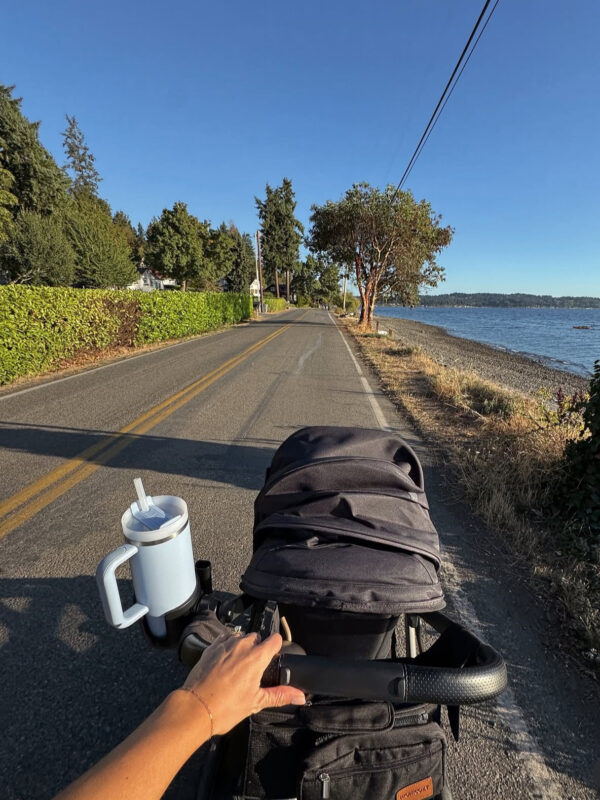
One of the most common requests I’ve gotten (and a FAQ in my upcoming GOOD // SWEAT Pregnancy Guide) is how to know if diastasis recti is occuring, how to prevent it, and how to avoid it. There are so many changes happening during pregnancy, physically and emotionally, and it just becomes quite overwhelming! My goal with my Pregnancy Guide is to eliminate any confusion and fear when it comes to caring for your body, especially to make sure you feel confident exercising and preparing for birth. Let’s dive into everything you need to know about Diastasis Recti!
Understanding Abdominal Separation
Diastasis Recti, or abdominal separation, is a common and normal occurrence during pregnancy. As your belly grows, the connective tissue between your abdominal muscles stretches, causing the muscles to separate slightly. For most women, this condition heals naturally within the first few months postpartum. However, after giving birth, it’s a great idea to see a physical therapist to assess any lingering separation and to get advice on safe core exercises.
Abdominal Muscle Anatomy
Your abdominal muscles are grouped into three layers:
- Transversus Abdominis: The deepest layer, which acts like a corset to support your organs and spine.
- Oblique Muscles (Internal and External): These muscles are responsible for side-to-side and twisting movements.
- Rectus Abdominis: The outermost muscles, commonly referred to as the “six-pack.” These muscles are most affected by Diastasis Recti as they stretch and pull away from the midline during pregnancy.
All of these muscles face increased stretch and strain during pregnancy and birth, but the most visible and lasting change typically occurs in the rectus abdominis. When these muscles stretch and separate, it becomes harder for your body to create the tension needed for core stability.
The Importance of Core Stability
The real concern with Diastasis Recti is the loss of the ability to create tension across the abdominal wall. When the muscles and connective tissue stretch beyond their optimal length, the abdominal wall can no longer generate the tension required for core stability. This lack of tension compromises your core function, which can lead to:
- Back Pain: Without proper core support, your back may have to work harder, leading to pain and discomfort.
- Pelvic Girdle Pain: The instability of your core can affect your pelvic alignment, leading to pain in the pelvic area.
- Pelvic Floor Dysfunction: Core instability can place additional strain on your pelvic floor, potentially causing issues such as urinary incontinence.
How To Prevent Diastasis Recti?
Diastasis Recti during pregnancy is also extremely common; some research estimates 100% of all people will have it in late stages. Risk factors include pregnancy, multiple pregnancies, increased BMI, and diabetes. For most people this improves dramatically by 8 weeks postpartum and then continues improving in the first 12 months postpartum. So, while you cannot prevent it, you can prepare for optimal recovery by learning how to engage your deep core and loading your core muscles appropriately during pregnancy. Additionally, maintaining good trunk mobility for adequate tissue stretch.
What to Avoid
One of the key signs of Diastasis Recti is a “doming” or “coning” appearance along your midline when you engage your core. This is a clear indicator that the abdominal muscles are struggling to manage intra-abdominal pressure.
Crunches and heavy oblique exercises are not recommended during pregnancy or postpartum recovery because they increase intra-abdominal pressure and can worsen the separation. Instead, focus on gentle core strengthening exercises that support your abdominal muscles without adding unnecessary strain. You’ll notice the mindful approach to your core in the workouts I designed throughout the guide. Again, every mama is different when it comes to the movements and exercises she feels confident with in pregnancy, but I mimicked a lot of the workouts in this program with how I was feeling through my own journey. I personally began removing exercises where I was lying on my back or exercises in standard planks around 22 weeks pregnant because that’s when I began to feel more pressure around my core. Please do not hesitate to modify any exercises you aren’t 100% confident with as you’re making your own way through these workouts.
By being mindful of your core, practicing proper posture, and avoiding certain exercises, you can protect your abdominal wall and promote healing postpartum.
Incorporating these guidelines into your pregnancy journey will help preserve your abdominal strength and function, setting you up for a smoother recovery after your baby arrives.
Be sure to look out for my GOOD // SWEAT Pregnancy Guide launching so soon on www.shopgoodeats.com.













